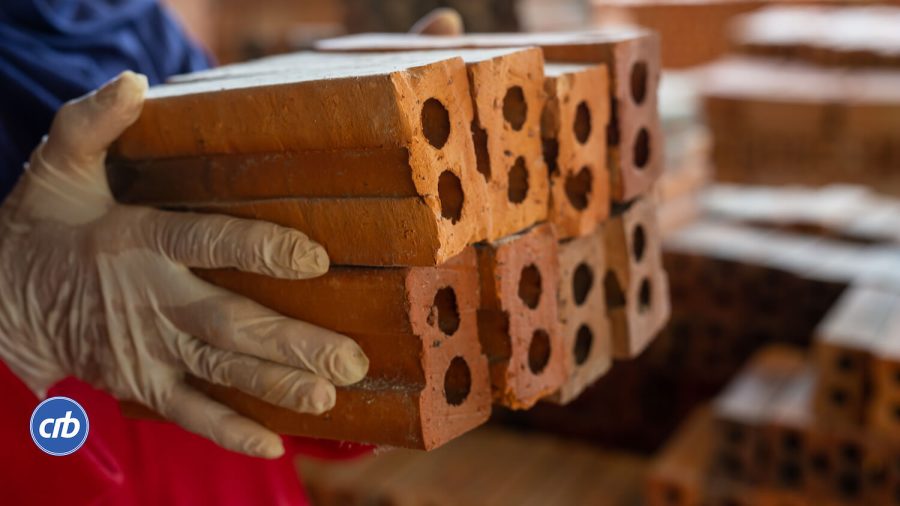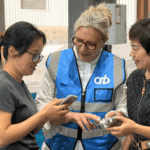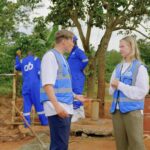Recycled Bricks from Cow Dung: How Africa Builds Sustainably and Earns with Carbon Credits
In many parts of Africa, housing shortages and environmental degradation go hand in hand. Traditional brick-making methods rely heavily on firewood and coal, contributing to deforestation and high CO₂ emissions. But an innovative solution is changing this narrative: recycled bricks made from cow dung.
These eco-bricks offer an affordable, sustainable, and profitable alternative to conventional clay bricks—and they generate valuable carbon credits. CRBcoin.com is at the forefront of this transformation, empowering local communities while helping investors tap into the growing carbon market.
What Are Recycled Cow Dung Bricks?
Cow dung is typically viewed as agricultural waste, but when properly processed, it becomes a high-value building material. In rural African communities, cow dung is mixed with natural fibers, clay, and ash to form bricks that are air-dried instead of kiln-fired.
Key Benefits:
- No burning required – no CO₂ emissions
- Low-cost production – ideal for low-income communities
- Natural insulation – cooler homes in hot climates
- Locally sourced – reduces transportation footprint
By replacing clay bricks, which emit approximately 1.5 kg of CO₂ per brick due to firing, cow dung bricks drastically reduce carbon emissions.
Sustainable Development Goals (SDGs) in Action
Recycled bricks from cow manure directly support at least four United Nations Sustainable Development Goals:
- SDG 9 – Industry, Innovation, and Infrastructure: Promotes sustainable and inclusive industrialization.
- SDG 11 – Sustainable Cities and Communities: Enables affordable, eco-friendly construction.
- SDG 12 – Responsible Consumption and Production: Reduces reliance on unsustainable resources like clay and firewood.
- SDG 13 – Climate Action: Avoids carbon emissions by eliminating the need for brick-firing.
These bricks aren’t just sustainable—they’re impact-driven.
How Do Cow Dung Bricks Generate Carbon Credits?
Carbon credits are earned when a project demonstrably reduces or avoids greenhouse gas emissions. Since traditional brick kilns emit large amounts of CO₂, replacing them with dung bricks qualifies as a certified emissions reduction activity.
Here’s a simple breakdown:
- 1,000 recycled bricks prevent approximately 1.5 metric tons of CO₂
- That equals 1.5 verified carbon credits
- Current carbon credit price range: €10–€20 (depending on registry and buyer)
- Revenue potential: €15 to €30 per 1,000 bricks
If a single rural production unit manufactures 100,000 bricks per year:
- 150 carbon credits/year
- Revenue potential: €1,500–€3,000 from credits alone
- Additional income from brick sales
Multiply that across 50 villages and you unlock significant climate and economic impact.
Building and Funding Carbon Credit Projects in Africa
At CRBcoin.com, we don’t just purchase credits—we develop carbon credit projects from scratch. Our cow dung brick initiatives are designed to maximize both climate benefits and financial returns.
Our process includes:
- Identifying local opportunities: We partner with rural communities that produce large volumes of livestock waste.
- Setting up production facilities: We invest in basic machinery, training, and operational support.
- Monitoring & reporting emissions saved: Using GPS tracking and verified data systems to ensure compliance.
- Registering with carbon registries: Every project is verified under a recognized standard.
- Tokenizing carbon credits: The resulting carbon credits are offered to buyers via the CRBcoin platform—making it easy to support real impact.
By tokenizing verified credits, CRBcoin bridges the gap between blockchain and carbon finance, making it easier for retail and institutional investors to participate in meaningful climate solutions.
Why This Model Works
- Communities get affordable homes, new jobs, and additional income from the sale of credits.
- The planet avoids thousands of tons of CO₂ emissions annually.
- Investors and buyers get access to credible, blockchain-verified carbon credits backed by real-world results.
This is climate impact you can trace, measure, and profit from.
Final Thoughts: Real Impact. Real Profits. Real Carbon Reduction.
The shift to sustainable construction in Africa is not only a climate necessity—it’s a business opportunity. By turning waste into wealth, cow dung bricks help communities thrive while generating measurable carbon reductions.
Through CRBcoin.com, investors and carbon buyers can directly fund and benefit from these projects. Each brick laid builds not just a home, but a better future—for the planet and its people.





